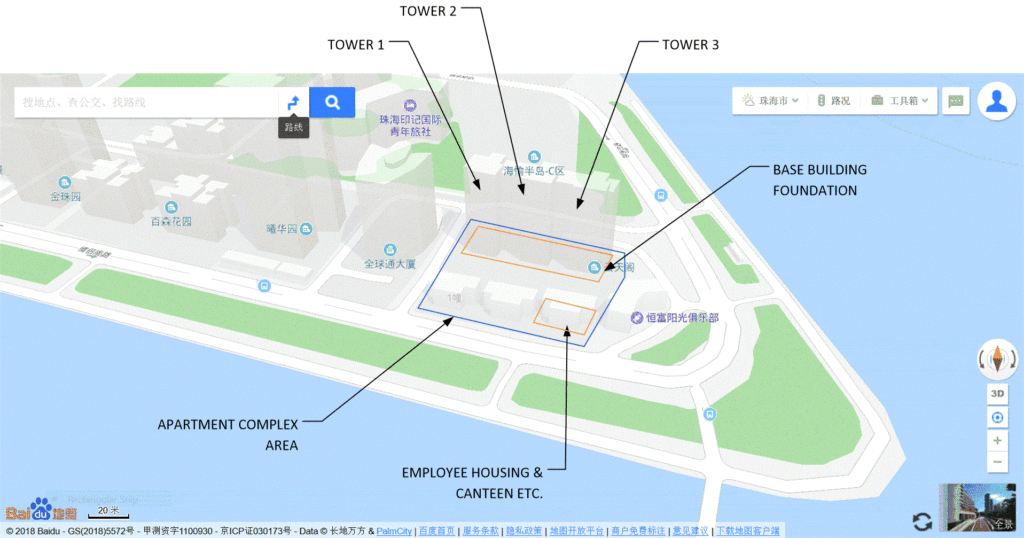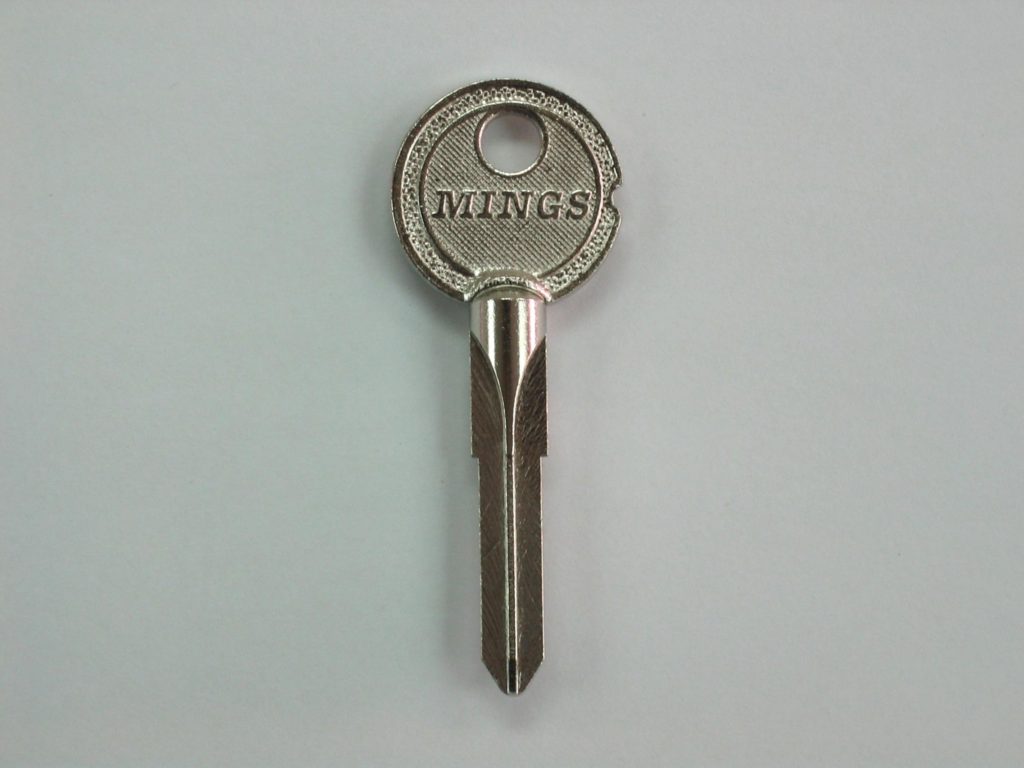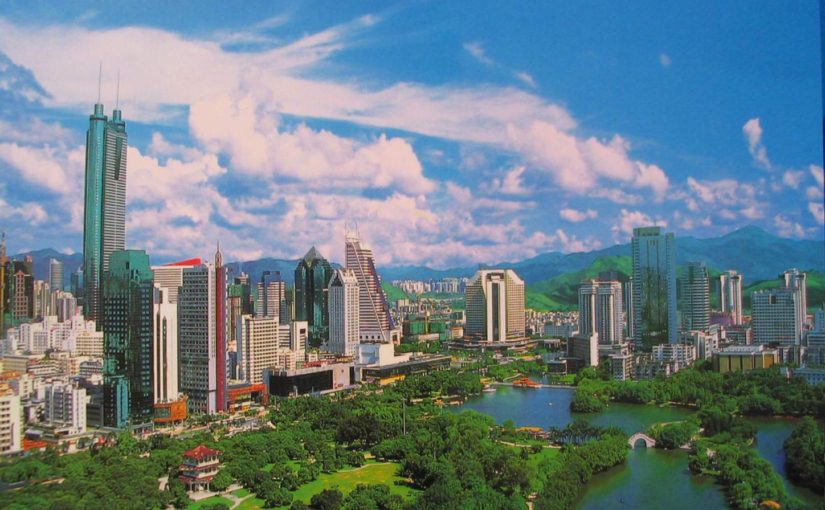This article was written in response to a discussion that I had with a friend of mine. He made the statement, “You wouldn’t be able to believe how these (Chinese) people lived! You and I could never live like that!” Turns out that he saw some propaganda from the UK and was convinced that the Chinese lived in windowless hovels. Not so. Not by a long shot.
Over the last thirty years, China has experienced a period of enormous growth. It began in the 1990’s. It started when the progressive socialist policies of Mr. Mao were replaced with the Free-Market Conservative policies of Mr. Deng. The result was predictable and resulted in an explosion in the overall quality of life for all Chinese people. A period of exceptional growth ensued and a middle class appeared. Here, we talk about the direct result of that change. We discuss the Apartment Houses that Chinese middle class live in.
Typically, most Chinese live in apartment complexes. There is a percentage, of course, that have their own houses. There are those that share, what we in the West refer to as “Townhouses”. There are those that occupy (rent-free) ancient dilapidated old complexes that can still be seen everywhere. (Why not? They might be old and ugly, but living in them is free!!!!) Not to mention, the others that live on farms, villages, and in the hinder-land.
Let’s talk about the Chinese apartment houses.
Chinese Apartments
In China, the apartment complex consists of an area that is surrounded with a fence and is guarded by guards (24-7) with video cameras and gates. Within that complex are the buildings that make up the complex. Now, in China, you might have a building that has three towers. Each tower would have it’s own set of elevators and access keys. The Chinese refer to these towers as “buildings”, so it can get a little confusing.

Above is a typical apartment complex. It is within an Apartment area and contains numerous large buildings. In the United States, we call these buildings “skyscrapers”. There are three towers in the example above. They share the foundations and the first three floors. They also share the underground garage. There are also other buildings. In China, when you work the employer must be able to provide you food and housing. Though you can opt out if you prefer.
The Gate
Every apartment complex is surrounded by a fence and a main gate. At the gate is a little guard house, a gate and biometrics. To enter any housing complex you need to show that you are a resident. Further, as a resident you will be given an electronic card-key or fob that will enable you to enter the apartment area. As is common in China today, everyone is monitored by CC Cameras, and recorded in the event that some crime is committed and there is a need to identify the perp. The gates are always manned 24-7.
Parking
Typically, most apartments have interior parking and exterior parking. The exterior parking is for short term parking. At my apartment complex, the fee is 10 RMB/hour if you park outside.
When you enter the front gate the license plate reader scans your car and records your entry time. Then when you leave you will need to pay the guard (BaoAn) the amount you owe. You can pay electronically, as most do. Typically people use Alipay or WeChat to pay. They just scan the QR code using their cell phone when the guard comes to the door.
Underground parking is reserved for residents. Typically there is a monthly fee that everyone needs to pay. I have heard different rates, but here in Zhuhai the rate is around 300 RMB/month.
The parking garages are unlike that which you will find in the USA. They are not dingy, grimy, dusty or anything like that. They are not at all dim or poorly it. They tend to be very clean, almost like you could eat off the floor in them. They are also spacious and well lit. Here is a Chinese chick in a micro-video in an underground parking garage. It’s pretty typical.
Anyways, the point here is that the parking garages are treated quite differently than they are in the United States. There is a staff that monitors them, cleans them, and makes sure that they are well lit and well taken cared for. Additionally, the care and concern for a given parking garage is a reflection of the owner of the apartment house in the building. As a result, many apartment underground parking garages are very nice and well maintained in China.
Building Access
Once you enter the apartment complex, you will typically need to walk through a park, or park-like area. The Chinese are very big on natural spaces in their apartment complexes. This area will have paths, exercise equipment, a few outside games like basketball or ping-pong, and an abundance of shrubs and trees. Even if the park area is on the third floor (typical in many cities).
Some parks share space with outside parking, while others are for pedestrians and doggies only. All of the parks have lighting, trashcans, places to sit, sleep, and have fun. Many have fountains (though whether or not they work, is hit or miss), and some have pools. Like the underground garage, you will have to pay to swim in the pool in your building. Typically it is 30 to 50 yuan per person per year. (From $5 to $10 USD.)
Here is a Chinese gal dancing on an apartment complex park. It looks like the third floor. As you can see, there are large areas to dance and exercise in (a very important thing in China as everyone loves to dance) and areas of grass and trees.
The pools tend to be shallow. With the deepest section rarely over 1.5 meters deep (about five feet). They are always tended and cared for, just like swimming pools are in the USA. However, they generally do not have life guards. The residents are expected to take care of themselves and to watch the younger kids and children.
Once you walk through this park-like area you will make your way to your building entry. If you are in an apartment that has, say five towers with one shared foundation, then you would enter the entrance directly associated with your tower. There are some buildings that have one central access point, while others have different access points depending on which tower you live in.
You will need an access key or FOB to get into the building. So, in case you are wondering, yes you need two keys to enter your building in China. One key is to the apartment complex, a second key to enter your apartment tower.
Elevator
Once you enter the building you will pass through a large open area that will hold mailboxes and some sofas and chairs for guests to wait for you. These are typically well lit and with marble or stone floors and walls.
You will pass through this area and go to the elevator area. In towers that are over 25 floors there are typically multiple elevators that run to pre-specified floors. For instance, one elevator might go from 1 – 25th floor, while another might run from 1, then 26th to the 50th floor. Some apartment buildings have elevators that run to only odd floors, while others run to even floors. All, in all, it cuts down on the waiting time in tall buildings.
Like what is common in many hotels in China, you will also need your apartment key or FOB to run the elevator. The elevator will not work (in many cases) unless you have a residence FOB.
Front Door to the Apartment
The front door will more than likely have “good luck” symbols on the door. These will be red designs with gold or black trim. This will consist of the symbol for “fortune”, either right side up or upside down and certain lucky sayings. It is a tradition to get new door decorations at the start of each Chinese New Year (CNY).
The doors will use a key that has nothing in common with American keys. American keys tend to be a flat bar of metal that has slots cut into it. Chinese keys come in different cross sections, including rectangular, triangular, circular, half-moon, and all with certain different kinds of security protections. Back twenty years ago, say around 2000, crime was rampant and people were constantly getting broken into. These different key types each come with their own unique blanks and procedures to open and replace. Indeed, you have to be a key-smith expert to be able to break into any Chinese houses today.

Most homes built in the last ten years all have biometrics. You need either a finger print or retinal scan to enter. Alternatively there is typically a key pad that is available if you want to be a little “old school” about home security.
Once inside – the apartment
Most Chinese apartments are much, much smaller than their American counterparts. they range in size from very tiny 40 square yard affairs, to 70 square yard, 120 square yard, 300 square yard, and up to 500 square yard apartments. Most Chinese people that I know own their house. They paid for it in cash. They live in a 70 to 120 square yard house.
The 40 square yard apartment is very tiny. It’s just big enough for a bed, a bathroom, and a refrigerator. Many that are being made now are called “lofts”. They fit an upstairs in this tiny space so that you can sleep above a very cozy living room.
The 70 square yard apartment is still small, but it is big enough for one (or two) bedrooms, a nice bathroom, a kitchen, and a living room. There is always a porch and a washing area. Many young professionals and first time home owners select this size of house to live in.
The 120 square yard apartment is pretty much ideal for the expanding family. It consists of three bedrooms, two bathrooms, a kitchen, a dining room and a living room. Of course there is a porch and laundry area.
Many Chinese families have the parents living with them. This is a long standing Chinese tradition where the parents of the oldest sun moves in with the family. They then take care of the new children of the family. The 200 to 300 square yard layout is perfect for this larger family. There will be three or four bedrooms, two bathrooms, large living room and dining room, and a very spacious kitchen.
There are many kinds of apartments in China, however we can distill most of them into the following format and understanding…
Attributes of a Chinese Apartment
Firstly, notice that there are no rugs or carpeting. The Chinese prefer solid stone flooring. This flooring is typically white or off-white. In just about every apartment that I have been to, liven in or visited, the floor was solid stone slab.
Secondly, note that the walls are not plain. There are adornments. The Chinese hire interior decorators to render the walls “comfortable” and suitable for a household. The walls are either painted white, tiled in sheet stone or marble, or tiled in white tile. It seems like the videos are of a mansion, but nope, it’s a real honest-to-goodness middle class house.
Sometimes the houses have a wooden or FRS decking floor. This is a rather recent innovation. Those apartments that have this wooden floor typically use it for the bedrooms, or other “soft” areas.
One of the first things you notice when you get into a Chinese house is that there is a rack of shoes near the door. It is typical in most Asian countries to take off your outside shoes and wear house slippers inside. You can see this in this next video. Here’s a chick in her apartment being cute…
Another thing about living in these towers is that they are really, really high up. Falling off the balcony is not an option when you are on the 36 floor. With that said, you often are able to get really, really outstanding views.
Now, if you are in the middle of a city, like downtown Shenzhen or Shanghai, you might find (much to your dismay) that your view is blocked and all that you can see is the apartment tower across the street. That really sucks. However, just moving to a different apartment on the same floor might provide you with an amazingly different view. Some, heck most, are just stunning.
Conclusion
I think that by looking at how other people live in distant parts of the globe, we can see our similarities and our differences in a new light. I believe that that knowledge is very important. It shows us our place on this planet and where we exist in the universe.
Rather than buying into the constant drum roll towards endless wars against some kind of cardboard cut out of what our “enemies” are, we can make the judgements ourselves. We no longer need to be blindly led towards more outrageously expensive and heart-rendering wars. War, mind you at only benefits the 0.01% of global elite.
I am tired of it. It’s a non-stop onslaught of war! war! war! propaganda. It’s all about getting YOU (yes, you) to buy into the notion that there must be a war to be fought. Whether it is against some tiny banana republic or a huge nation like China or Russia.
People are people. We eat. We sleep. We work. We have families. There are more things in common with each other, than our disagreements. That is the truth. All you need to do is step outside the USA bubble and look around a bit. Open your eyes.
Links about China


China and America Comparisons










Learning About China





Articles & Links
- You can start reading the articles by going HERE.
- You can visit the Index Page HERE to explore by article subject.
- You can also ask the author some questions. You can go HERE to find out how to go about this.
- You can find out more about the author HERE.
- If you have concerns or complaints, you can go HERE.
- If you want to make a donation, you can go HERE.















Seems like someone could make a lot of RMB selling Murphy Beds there. Then you could have more room to dance!